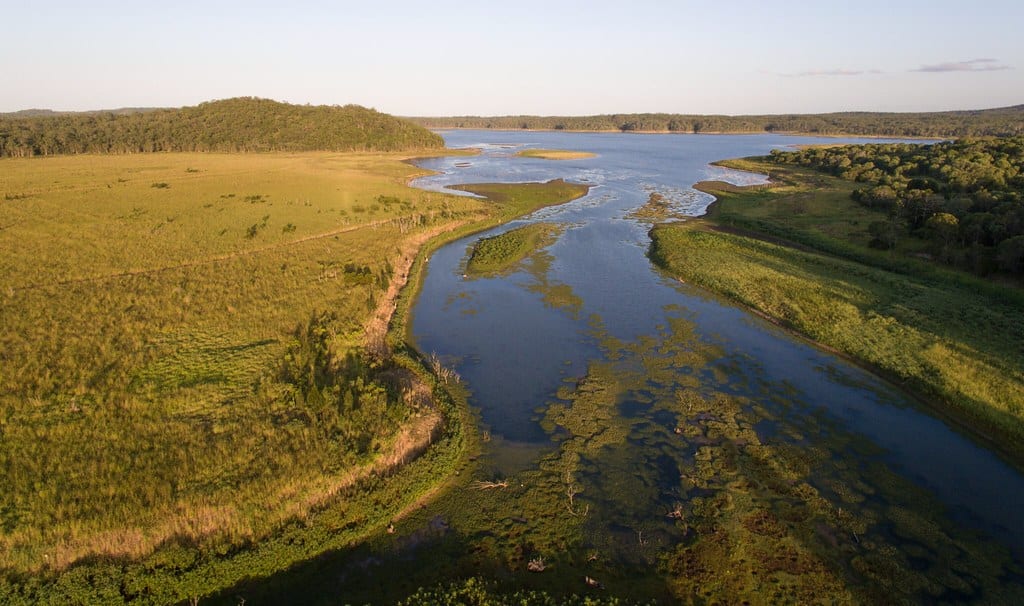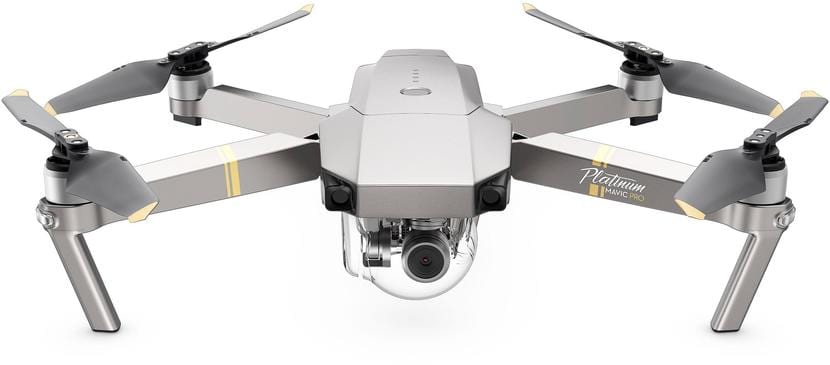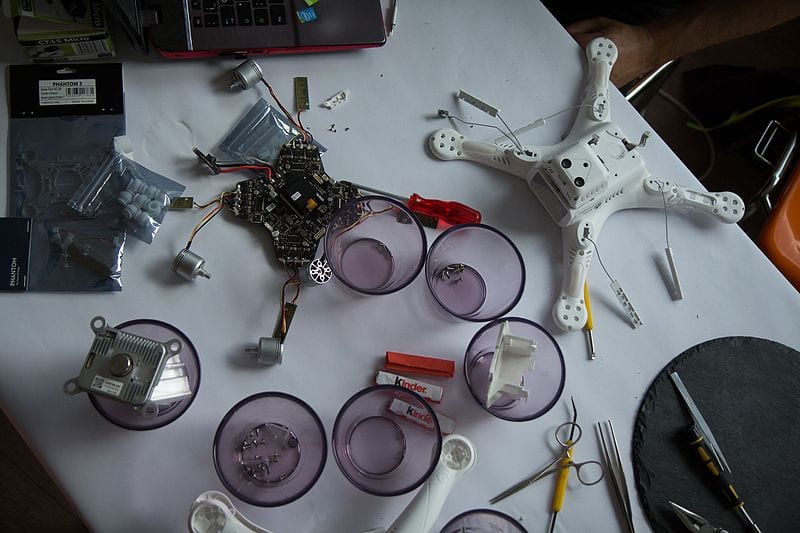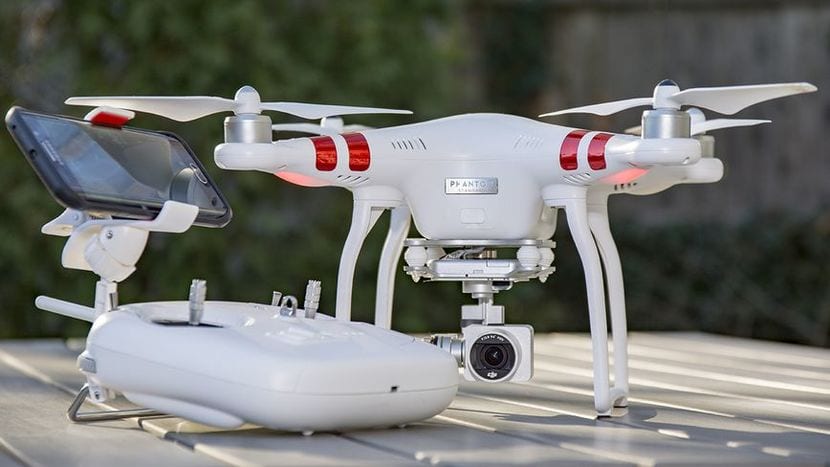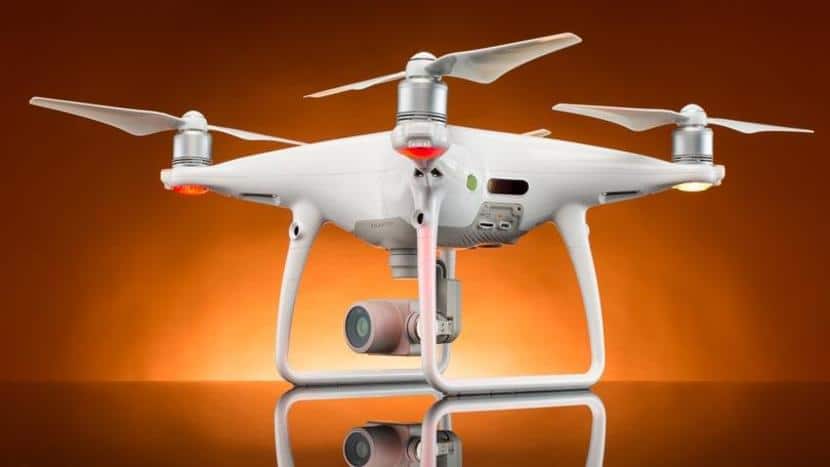
DJI is a well-known and award-winning Chinese technology company. It is dedicated to designing and producing drones for aerial photography. Its quality is excellent and the characteristics of each drone model have made it one of the most demanded and most successful on the market. Not only are they sales leaders, they are also the most used for television, musical work, the film industry for filming, etc.
It currently represents about 70% of the drone market share, and it would be somewhat higher if you filter only the professional market. In fact, DJI won the 2017 Technology & Engineering Emmy Award for its technology for the cameras mounted by drones. And if there is a drone model that stands out, that is the Phantom series.
What can I use it for and what can I not use it for?
DJI drones are especially designed to carry out recording and / or image capture tasks. They are not aerodynamic and lightweight models for racing. So if you are looking for a racing drone, DJI is not the best option. But its stability and characteristics make it perfect for amateurs and professionals to shoot video and take aerial photos. For that it is one of the best products you can find.
Sometimes I have also been asked is if you can lift weight, for example, to carry rescue kits or supplies to points inaccessible for rescue, etc. The truth is that the Phantom quadcopter can lift a few hundred extra grams, but they are not designed to carry weight beyond the support and photography equipment they carry. If you take it off you can load something else ... What is certain is that there is a DJI S900 (or the Industrial series) with 6 propellers that can load up to 5 kg, a quite considerable amount.
Conclusion, if you just want a good drone to steer or capture good images, DJI is a good choice. For racing and other purposes, you should think about seeing other variants...
Do I need to buy a professional drone?
If you are a beginner and you've never tried one, the answer is no. You should start with a cheap model to get used to it. Whether you are a seasoned hobbyist or professional, don't doubt that DJI has the best products for you.
If the answer is yes, you should also ask yourself the DJI version or model you need. For example, if you are going to capture images and video with the Phantom, you might settle for a DJI Phantom 3 Pro if you are a hobbyist. But if you need anything else, then go straight for one of the DJI Phantom 4 versions.
Differences with other DJI models
DJI has several models for satisfy various needs of its users. The most notable models are:
- DJI Spark: for everyone looking for a simple and easy drone. A good option for amateurs. They are cheap and not too large in size, but the quality and technology is still more than decent. But do not expect the benefits or technologies that other superior models have ...
- DJI Mavic: they double in price to the Spark, therefore they are not cheap drones. This series is quite popular with fans of aerial photography and video. It has a sophisticated design and intelligent flight modes, with good autonomy, speed, stability and quite silent. There are several editions of this drone, such as the Air, Pro, Platinum, etc.
- DJI Phantom: It is the king of the firm quadcopter. It is good to carry a high quality camera on its stand to take the best images and record high definition video. Its price is high, but it is worth spending it to get the best results. That is why it is a favorite for image professionals. Currently, they are going for the 4th version, and like the previous one, there are variants such as the normal and the Pro and Pro Plus, a little more expensive, but with extras.
- DJI Inspire: another series of drones with 4 motors and great power and agility to make the best recordings in motion. For example, to take action film shots, follow people in motion, cars, etc.
- DJI goggles: its price is a little higher than the Spark, but it is cheaper than Phantom and Mavic. This model is especially good for use with FPV goggles, designed to have a fully immersive flight experience. The movement of your head will change the orientation of the camera so that you can see everything during the flight. By the way, that does not mean that the previous ones are not compatible with FPV, only that this is better integrated with this technology.
- DJI Industry: it is a special series for somewhat more specific uses. They can lift more weight because they usually have up to 8 rotors instead of the typical 4. They are quite used in the agricultural industry.
You can buy and compare any of these models in the DJI official store in Spanish. You will also find a large number of accessories (supports, cameras, ...) for all series.
Now that you know the features of DJI modelsLet's go with the Phantom 4, one of the brand's crown jewels ...
Phantom 4 technical characteristics
El last to join this series has been the Phantom 4, with significant improvements over previous models. The technical characteristics of this drone are impressive.
Phantom 4
Is most basic of the Phantom 4 series, with good performance and technical characteristics that I detail here:
- Weight: 1380 g
- Ascent speed: up to 6m / s (depending on flight mode)
- Maximum flight speed: up to 72 km / h (depending on flight mode)
- Maximum inclination angle: up to 42º (depending on flight mode)
- Maximum angular speed: up to 250º / s (depending on flight mode)
- Maximum height: 5000m
- Maximum wind resistance: 10m / s
- Battery life: 28 min approx. with 5350mAh Li-Po battery and charger included
- Operating temperature range: 0-40ºC
- Geolocation system: GPS + GLONASS
- Stabilization: 3 axes
- Camera: 12.4 MP CMOS f / 2.8 aperture, with support for HDR and UHD (4K)
- Memory card: supports microSD up to 64 GB UHS-1 class
- Remote control frequency: 2.4 Ghz (remote with support for mobile devices) Enhanced Lightbridge
- Obstacle detection system: 5-way with three sets of sensors (front, back, underneath and to the sides)
- Mobile App for Image Relay: DJI GO 4 for iOS and Android (with 220ms latency)
- Price: approx. € 1100
Phantom 4Pro
La DJI Phantom 4 Pro version it is an improved version with respect to the base, with some extras. Includes all of the above plus:
- Distance or maximum height: 6900 m
- Battery life: 30 min approx.
- Weight: 1400 g
- Camera Sensor: CMOS 20MP
These improvements represent a price increase of approximately € 500, that is, it would have a approximate price of €1600.
Phantom 4 Pro +
La DJI Phantom 4 Pro Plus version It is an improvement over the Pro version, and a small price increase over the previous one. The improvements, including everything the base Phantom 4 would have as well, are:
- Control knob: with included 5.5-inch screen, eliminates the need to use a mobile device
- Radio control frequency: you can use 2.4 and 5.8 Ghz to reduce interference
Phantom 4 Advanced
El DJI Phantom 4 Advanced It is slightly different from the Pro. It shares most of the features with the Phantom 4, obviously, but with the following features that differentiate it from the Pro:
- Obstacle detection system: It only has the obstacle sensor from the front and below, but eliminates the rest of the sensors from the back and the sides. Therefore, if you do not control it well, it could collide with side and rear obstacles ... That is, it is timidly inferior in this to the Pro.
- Weight :: 20g lighter
Therefore, it is one more option oriented to the most experts and that they master the piloting of these artifacts better. Instead, the price is between the base Phantom 4 and the Pro, that is, not as expensive as the Pro or Pro Plus.
Phantom 4 Advanced +
If we take the Advance as a reference, the DJI Phantom 4 Advanced Plus has only a price of about € 100 higher. The features are almost identical. The only thing that varies is:
- Remote control: with 5.5 ″ screen included
As with the Pro + compared to the Pro.
Improvements over the DJI Phantom 3
If you wonder how the DJI Phantom 4 vs. Phantom 3, it is quite simple to explain. If we compare the Phantom 3 Standard with the Phantom 4 base we have the following:
- Range: 1000m vs 5000m
- Autonomy: 23 min vs 28 min
- Weight: 768 g vs 1380 g
- Camera Sensor: 12MP FullHD CMOS vs 12MP 4K CMOS
- Connectivity: WiFi vs Enhanced Lightbridge (more than x4 speed vs WiFi)
- Geolocation: GPS vs GPS + GLONASS
- Price: approx. € 728 vs approx. € 1100
Of course the technologies and driving modes have improved. In short, it has been achieved a higher quality drone and benefits, although it also has a considerably higher weight. In fact, there are also several editions of the Phantom 3, such as the Pro and Advance. If we compare the features of the Phantom 3 Pro, they are somewhat more similar to where the Phantom 4 starts, that is, a range of 5000m away and a 12MP camera with 4K capacity.
For that reason, if you are looking for a model similar to the base Phantom 4, but at a cheaper price, you can buy a Phantom 3 which has a lower price as it is older. The only thing that is considerably lower is the connectivity between the drone and the controller, which is greatly improved in the 4.
The future DJI Phantom 5
What we can expect from future DJI Phantom 5 It is a drone with considerable improvements over the 4. Although the Phantom 4 now represents the top of the DJI range, it will not take long for the next generation to arrive. If we analyze the improvements of the 4 with respect to the 3, we could expect a drone with an improvement in several points:
- Autonomy- The DJI Phantom 5 is likely to be more powerful than the 4, but its range is also likely to be even better. Perhaps in a few minutes it will exceed the current half hour that they usually last.
- Connectivity: There may be improvements in the Lightbridge technology, since if the visual section is improved, a better link would also be needed to avoid delays and that the bandwidth is higher.
- Scope: Maybe the new Phantom 5 will exceed the 7000m barrier.
- Camera- The camera will be one of the things that would change the most, perhaps with a higher FPS rate for 4K and even the ability to capture 8K.
I hope I have you helped in choosing the drone and clear your doubts.
